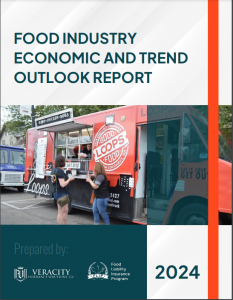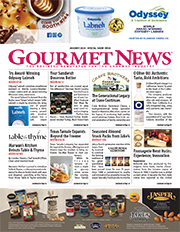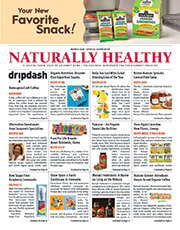Food Industry Operators See Growth in 2024, FLIP Report Shows
 The Food Liability Insurance Program, a national insurance program designed for small- to mid-sized operators in the food industry, released its inaugural “Food Industry Economic and Trend Outlook Report,” which includes proprietary statistics on insurance trends in the category, survey results from operators insured by FLIP, and general economic statistics on the category as a whole.
The Food Liability Insurance Program, a national insurance program designed for small- to mid-sized operators in the food industry, released its inaugural “Food Industry Economic and Trend Outlook Report,” which includes proprietary statistics on insurance trends in the category, survey results from operators insured by FLIP, and general economic statistics on the category as a whole.
The report includes a marketwide analysis of out-of-home food businesses, excluding restaurants and grocers, and segment-specific insights of bakers, mobile bartenders, caterers, event-based businesses such as food truck and farmers market vendors, personal chefs and home (cottage) food businesses.
“We look to not only be an insurance vendor to our customers but a partner in their success,” said Daryle Stafford, CEO of Veracity Insurance, FLIP’s parent company. “As such, we decided to compile this report in the hopes that our insured will find the information valuable in planning and benchmarking their business against industrywide and segmented trends as they look to grow.
“Some inspiring notes from our findings include that 64 percent of our client operators believe their businesses will grow in 2024 and that consumers are spending more on out-of-home food than ever before (a 6 percent increase YoY). We look forward to continuing to provide actionable content for our customers in the months ahead aligning with our commitment of being a true partner in their businesses.”
FLIP statistical highlights from the report include:
- An analysis of insurance claims processed in 2023 compared to 2022 shows an increase of 2.3 percent. The most prevalent claim type in 2023 was an auto or trailer incident, which represented 28 percent of all claims. The following three claim types were accident-causing third-party damage (18 percent), theft (13 percent) and equipment failure of food spoilage (13 percent) respectively.
- The average payout for all claims filed was $4,632.
- California, Texas and Florida represented the highest concentrations of claims throughout the United States.
Food business owners felt the impact of higher food costs in 2023, with 65 percent of those surveyed indicating rising costs impacted their net income, although data suggests that from the beginning of 2023 to the end, wholesale food prices decreased 5.7 percent. Less than 3 percent of FLIP operators surveyed believe costs will continue to go down.
- Operators are planning to continue to raise prices in 2024, with 91 percent reporting they believe ticket sizes will go up in 2024.
- Operators are still relying on cash as 69 percent indicated they do not plan on going cashless in 2024, with 30 percent planning to do so.
- 56 percent of food operators plan to spend similar amounts on marketing in 2024 as they did in 2023, with 34 percent planning to increase their spend.
Overall, each category analyzed is growing in market size YoY with food trucks being the most (9.9 percent), followed by caterers (7.7 percent), farmers market vendors (7 percent), home-based (cottage) food businesses (4.2 percent), mobile bartenders (3 percent), bakers (2.4 percent) and personal chefs (2.4 percent).
For more news of interest to the food and beverage industry, subscribe to Gourmet News.








